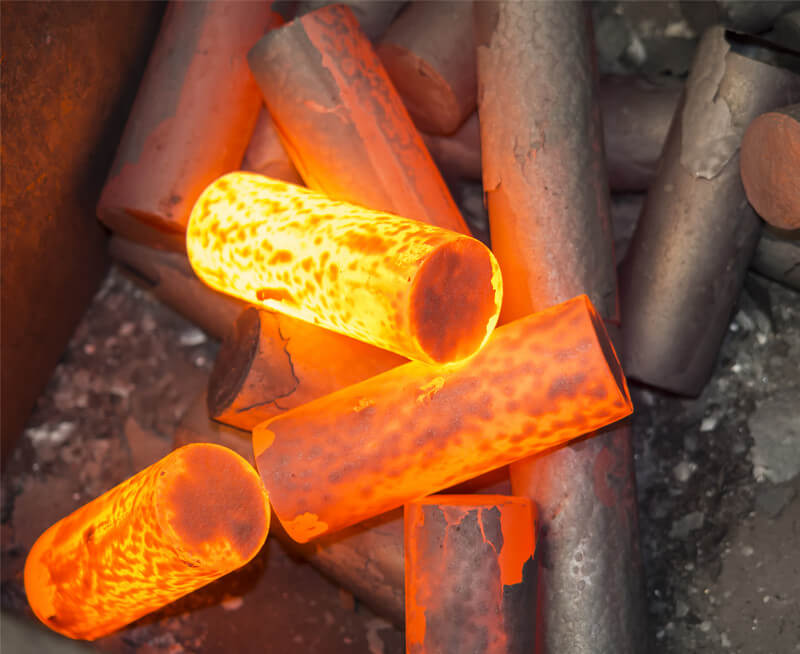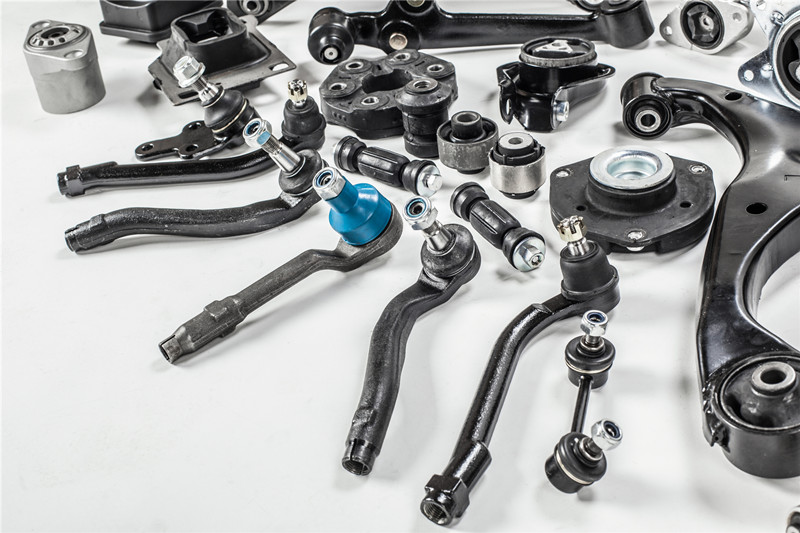
42crmo Steel Forging White Dot Study
July 11, 2021
The Application Of Forging Process In Automotive Lightweighting
September 4, 2021Technical Trends of Precision Forging of Auto Parts
In our country, industrial development directly affects the overall economic development. However, industrial technology is the core of this development. The more advanced the technology, the faster is the industrial development.
Rapid development has also set high standards for modern equipment, especially precision instruments. Parts forged by precision forging technology can usually be used directly or requires very little processing. This means fewer processing steps, which reduces the cost of forgings.
Advanced industries (automobiles, aerospace, energy, etc.) are using advanced technology for manufacturing. They use precision forging and forming technology to produce parts, which can effectively increase production, quality, and economic benefits.
This article makes a brief analysis of the technology trends of the precision forging of automotive parts for the reference of the industry.
-
Process methods commonly used in precision forging technology
1.1 Hot precision forging process
Hot forging refers to a precision forging process in which forging is performed above the recrystallization temperature. Due to the high deformation temperature, the deformation resistance of the material during the forging process is small. The plasticity is good, and it is easy to form parts even with complex geometric shapes.
1.2 Cold precision forging process
The cold forging process is a precision forging forming technology that is forged at room temperature. Due to room temperature molding, dimensional errors caused by thermal expansion and contraction are avoided. Therefore, the shape and size of the workpiece for cold forging are easier to control. The other advantage of cold forging is that the surface of the forging is not oxidized and burnt, and the surface quality is high.
1.3 Warm precision forging process
Warm forging is a precision forging technique for forging metal, where the workpiece is heated to a suitable temperature lower than the recrystallization temperature. It combines the advantages of both the hot forging and cold forging methods and avoiding their defects. Warm precision does not require forging and annealing, which makes the production cheaper.
1.4 Composite precision forging process
The composite precision forging process combines cold, hot, and hot forging processes to forge workpieces. It can be used to avoid the shortcomings of cold, warm, and hot forging. At the same time, compared with the parts produced by a single forging technology, the parts produced have higher mechanical properties, dimensional accuracy, and surface quality.
At present, commonly used compound forging processes include warm forging-cold finishing, hot forging-cold forging, hot extrusion-cold boring, warm precision forging-cold extrusion, and so on.
2. Application of precision forging forming technology in automobile manufacturing
There are many auto parts in the automobile manufacturing industry, with some having very high quality and performance requirements. The use of precision forging forming technology greatly helps to achieve these requirements. The application scope of precision forging forming technology in automobile manufacturing includes:
Gear parts: A kind of automobile shift gear developed in Japan, combining gear forging and cold forging forming technology. It is in a leading position in the field of automotive gear forging. The forging technology saves about 30% of raw materials, and the average utilization rate has increased to 60%.
The precision and performance of forgings are very high, which brings greater economic benefits. This technology has been introduced into China’s automobile manufacturing industry.
Spline parts: At present, whether at home or abroad, the forging processes used in the production of automobile spline parts include the flat frame extrusion process, cold extrusion process, integrated die, and multi-roll die extrusion process.
In China, the flat frame extrusion process and the direct extrusion process of the integral die are commonly used. The cold extrusion precision forging forming technology is only used for a small number of spline teeth. In Japan, with a more developed automobile industry, cold extrusion technology is mainly used.
Shaft parts: When manufacturing shaft parts, cold extrusion forging technology is mainly used for half shafts, output shafts, and input shafts. In Japan and Germany, cold extrusion technology is basically popular in the manufacture of shaft parts. Here in China, only a few automobile manufacturing plants use cold extrusion technology.
Integral axle housing: Some European and American countries have adopted shrinking expansion technology for manufacturing integral automobile axle boxes. China has developed reduced diameter hydraulic expansion molding technology to gradually replace bridged and welded axle boxes.
3.1 Continuously improve the quality of workpieces
The previous precision forging was mainly for refining blank parts. Now it has gradually developed into the direction of direct production of parts. At present, the research focus of precision forging technology is to improve the dimensional accuracy of the generated workpiece. Inaccuracies of the workpiece are mainly due to the excessive deformation resistance, mold defects, and the equipment itself.
By developing new processes, combining the advantages of different forging temperature processes and the deep processing of parts can improve the dimensional accuracy of workpieces.
3.2 Adopt new raw materials
With the continuous development of the manufacturing industry, raw materials are constantly updated. Traditional forging technology generally uses ferrous metals as raw materials. But now the range of raw materials has been increasing. For example, titanium alloys are used as raw materials in the automotive and aerospace fields. Aluminum alloys and magnesium alloys are widely used in the manufacture of aircraft and high-speed rails.
3.3 The scale of the processed workpiece is developing towards multi-polarization
Nowadays, the size of mechanical parts used is increasing, and the application range is from large to small. In recent years, some very large and ultra-small mechanical parts have become more and more popular. For example, in recent years, some MEMS parts require very small parts. Especially scientific research, medical treatment, and other parts that use precision instruments need a small size. Similarly, large-scale equipment is needed, and some mechanical parts are also very large.
Concluding remarks
Precision forging forming technology is widely used in the automotive industry. The level of technology also marks the manufacturing level of the automotive industry. Germany and Japan are far ahead of research in this field, and China’s auto industry has just started. Many technologies have not yet achieved true localization, and this more research is needed to develop advanced precision forging technology. This, in turn, will promote the rapid development of China’s automobile industry.




